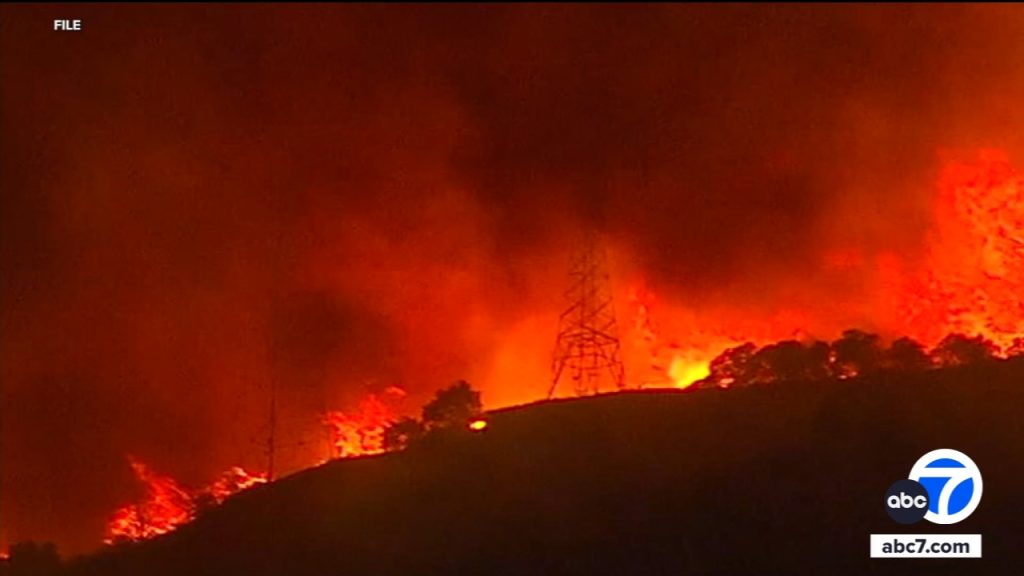The California Public Utilities Commission (CPUC) has approved Southern California Edison’s (SCE) request to increase customer rates in order to recover $1.6 billion in costs associated with the 2017 Thomas Fire. The decision, which was met with both criticism and concern from lawmakers and consumer advocates, allows SCE to pass part of the financial burden onto its customers over the next 30 years.
CPUC Unanimously Approves Rate Hike
The rate increase was approved by a 4-0 vote, with CPUC commissioners agreeing that SCE customers will bear a portion of the financial liability for the wildfire damages.
According to SCE, the cost recovery plan is structured to minimize the immediate impact on customers, resulting in an estimated $1 increase in monthly utility bills. However, critics argue that passing these costs onto consumers is unfair, given that the fire was caused by SCE’s own infrastructure.
The approved rate hike covers approximately 60% of the total costs recorded by Edison related to wildfire claims, settlements, and legal expenses.
The Devastation of the 2017 Thomas Fire
The Thomas Fire began on December 4, 2017, in Santa Paula, California, and was caused by two separate ignitions linked to SCE’s equipment. Within hours, the fires merged, creating what became one of the largest wildfires in California history at the time.
Key Facts About the Thomas Fire:
Burned more than 280,000 acres
Destroyed or damaged 1,343 structures
Resulted in two direct fatalities
Triggered Montecito debris flows, which led to an additional 23 deaths
Thousands of lawsuits filed against SCE
Following the wildfire, heavy rainfall in early 2018 caused massive debris flows in Montecito, leading to widespread destruction and additional loss of life. These deadly mudslides were attributed to land destabilization caused by the fire, further increasing the financial impact on affected communities and insurance companies.
Legal Fallout and Financial Settlements
After the Thomas Fire and Montecito debris flows, SCE faced thousands of lawsuits from:
More than 5,800 individual claimants
Over 300 insurance companies
15 public entities
SCE settled nearly all claims, though a few remain unresolved. The utility company also incurred significant legal and financing costs while addressing these claims.
To help cover the total expenses, Edison International’s shareholders will contribute approximately $1 billion, along with an additional $50 million dedicated to wildfire prevention improvements. However, critics argue that SCE’s shareholders should bear more of the financial burden, rather than shifting costs to ratepayers.
Lawmakers and Consumers Criticize Rate Hike Decision
Many state legislators and consumer advocacy groups have spoken out against CPUC’s decision, arguing that forcing customers to pay for corporate negligence is unjust.
Senator Ben Allen’s Strong Opposition
One of the most vocal critics, California State Senator Ben Allen, released a statement condemning the rate increase, arguing that the burden of liability should remain with SCE and its investors—not consumers.
“By allowing SCE to raise rates in order for customers to cover these damages, we are failing to hold them accountable and instead passing their liability onto the residents of the region that bear no responsibility for the disaster,” Allen said.
Senator Allen also pointed out that SCE’s shareholders are already benefiting from high profits, making the rate hike particularly frustrating for consumers.
SCE’s Soaring Profits Raise Further Concerns
Allen highlighted that:
SCE’s shareholder return rate is the highest in California.
In Q3 of 2024, SCE reported a net income exceeding $500 million.
This marked a 232.9% increase in profits year-over-year.
Given these numbers, many question why a company with such high earnings needs to pass costs onto customers rather than absorbing more of the financial responsibility itself.
Call for a Fairer System
Senator Allen and other lawmakers have urged CPUC to rethink its approach to utility company accountability, proposing reforms that would:
Limit the ability of utilities to pass disaster costs onto consumers.
Ensure shareholders take greater responsibility for wildfire damages.
Encourage stronger wildfire prevention investments.
They pledged to work on legislative solutions that would protect consumers from similar cost burdens in the future.
SCE Defends Rate Increase, Says It’s Necessary
In response to the backlash, SCE defended the decision, arguing that the rate hike is necessary to cover past liabilities while ensuring financial stability.
The company emphasized that:
The cost recovery plan is spread over 30 years to reduce the impact on customers.
The $1 monthly bill increase is relatively small compared to the overall costs.
Additional wildfire mitigation measures are being implemented to reduce future risks.
SCE also pointed to its $50 million investment in system improvements, which aims to:
Upgrade electrical infrastructure to prevent future ignitions.
Expand fire prevention measures in high-risk areas.
Enhance monitoring and emergency response systems.
Looking Ahead: Will More Utility Rate Hikes Follow?
Potential for Future Increases
Consumer advocates warn that this may not be the last rate hike California residents face. With wildfires becoming more frequent and destructive, utility companies like SCE and Pacific Gas & Electric (PG&E) may seek additional rate increases to cover liability costs in the future.
Reforming Wildfire Liability Laws
The ongoing debate over who should pay for wildfire damages—utilities, shareholders, insurance companies, or customers—has prompted discussions about potential legal reforms.
Some lawmakers propose creating a statewide wildfire insurance fund to help limit customer exposure to liability costs.
Others suggest tightening regulations on utility companies to ensure they take greater responsibility for infrastructure failures.
What Customers Can Expect
For now, SCE customers will see a gradual increase in their utility bills. While the initial impact is estimated at $1 per month, consumer watchdogs caution that additional increases could follow in the future if wildfire risks continue to grow.
Final Thoughts
The CPUC’s decision to approve Southern California Edison’s rate hike has sparked significant controversy, with lawmakers, consumer advocates, and residents expressing frustration over being forced to cover wildfire-related liabilities.
While SCE argues that the cost recovery plan is necessary and reasonable, critics insist that holding customers accountable for corporate negligence sets a dangerous precedent.
As California continues to grapple with the financial consequences of wildfires, the debate over utility accountability, consumer protection, and corporate responsibility is far from over.
Disclaimer – Our editorial team has thoroughly fact-checked this article to ensure its accuracy and eliminate any potential misinformation. We are dedicated to upholding the highest standards of integrity in our content.





More Stories
California Utility Commission Approves SCE’s $1.6 Billion Rate Increase Amid Controversy
California Utility Commission Approves SCE’s $1.6 Billion Rate Increase Amid Controversy
California Utility Commission Approves SCE’s $1.6 Billion Rate Increase Amid Controversy